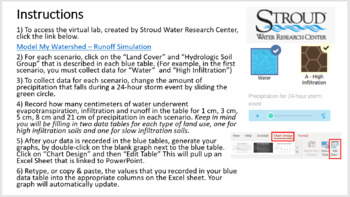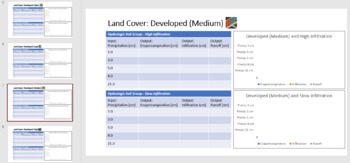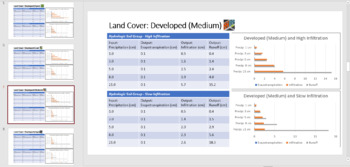Land Use and The Water Cycle Virtual Lab
- Zip
- Internet Activities
Description
In this virtual lab, students will use the Runoff Simulation, created by Stroud Water Research Center, to determine how land cover and soil type can influence the movement of water.
Students will first review the water cycle and the concept that when precipitation falls to the Earth's surface, it can then undergo three processes: 1) evapotranspiration 2) infiltration or 3) runoff. They will then use the simulation to make adjustments to land cover and soil type to better understand how these two factors affect the amount of precipitation that will evapotranspirate, infiltrate or runoff.
The virtual lab has students explore combinations of nine different land use scenarios (water, developed - open, developed - low, developed - medium, developed - high, forest, grassland, crops and wetlands) and two different soil types (high infiltration and slow infiltration). For each scenario, students will adjust the precipitation to 1 cm, 3 cm, 5 cm, 8 cm and 21 cm and record in a data table the amount of water that will evapotranspirate, runoff or infiltrate at each step. The students can then create a graph of each scenario with the data they collected using the Excel extension feature included on Microsoft PowerPoint. Instructions for creating the graphs are included in the virtual lab. These graphs can be removed if time is limited.
Finally, students will study their data tables and graphs to answer 12 review questions, which includes analyzing examples of real-world land use changes.
*Answer key is included with purchase





